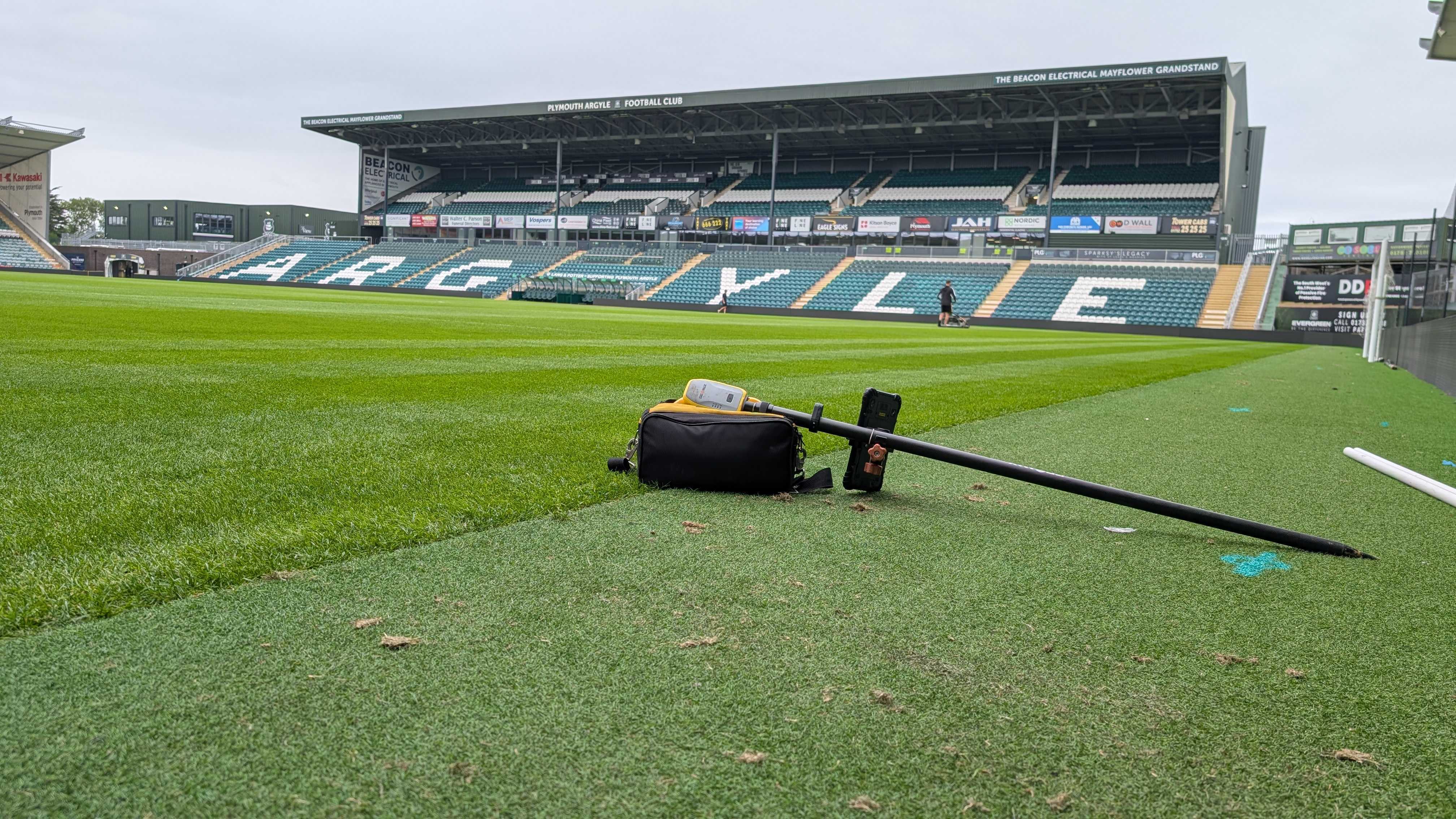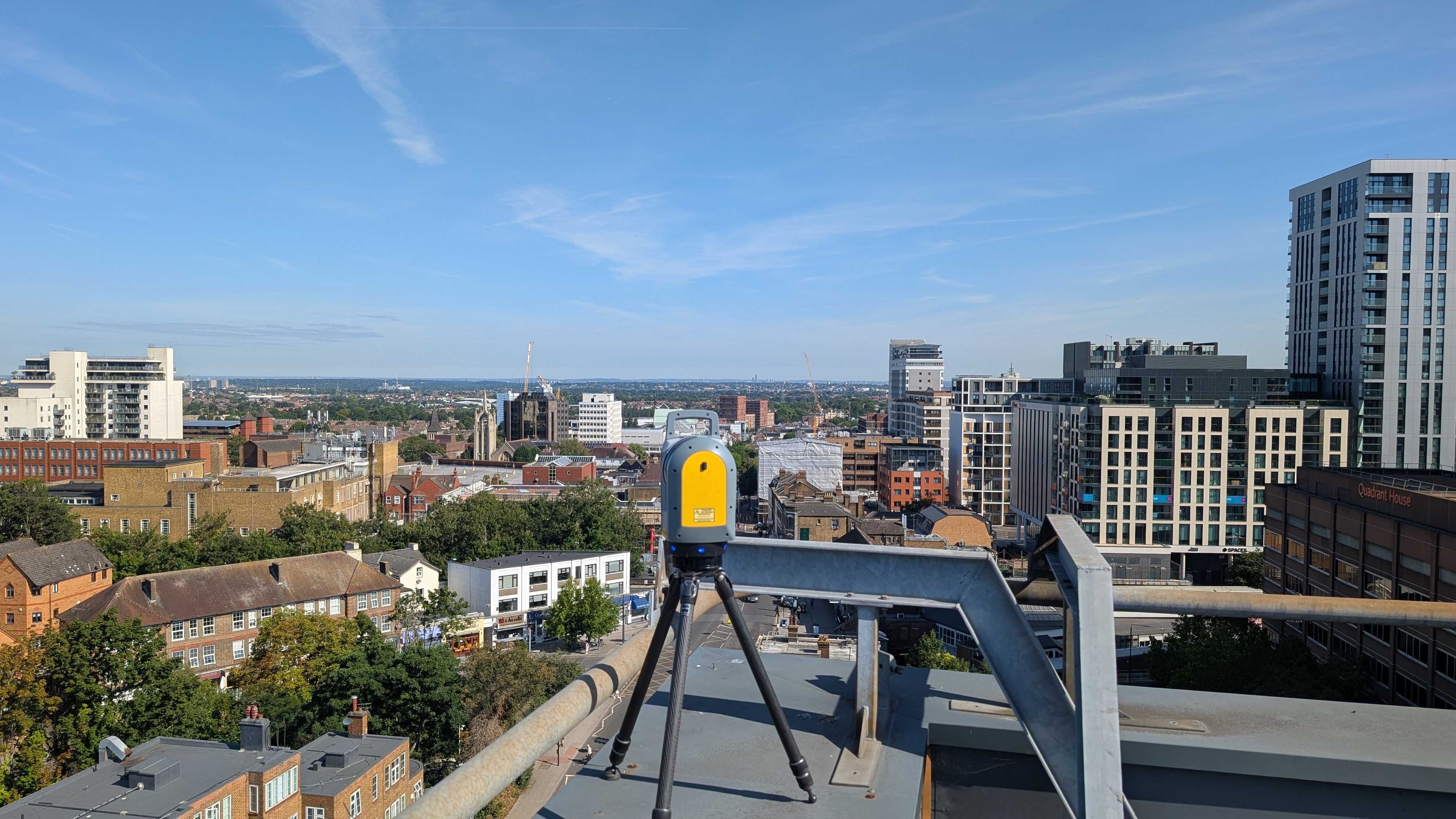Staying ahead in the construction industry means embracing precision, transparency, and compliance at every stage of a project.
Construction Verification As-Built (CVA) has emerged as a critical tool in meeting these demands, offering solutions that go beyond traditional practices to address challenges like regulatory compliance, stakeholder trust, and cost management.
This guide brings together essential insights from our detailed blogs at Intersect Surveys. From ensuring compliance with safety standards to enhancing communication and reducing costly mistakes, each post dives into a unique facet of construction verification that can elevate your projects to new levels of accuracy and efficiency.
Let’s explore the values of CVA and how it can redefine success in your construction projects.
- Construction Verification As-Built: Ensuring Site Compliance: This blog explores how CVA empowers teams to identify and address discrepancies early.
- Top 7 Benefits of Construction Verification: We explore how CVA ensures projects meet safety regulations, builds trust among stakeholders, and minimises costly mistakes.
- How Construction Verification Supports the Building Safety Act: How Construction Verification As-Built (CVA) aligns seamlessly with the Building Safety Act requirements.
- Construction Verification Reports: The Financial Benefits: Construction Verification As-Built (CVA) reports offer a cost-effective solution to financial challenges, saving time and money.
- Building Trust in Construction: The Power of Objective Verification Reports for Stakeholders: In this blog, we discuss how CVA reports reduce ambiguity and strengthen stakeholder relationships.
- Avoiding Disputes and Claims: The Role of Construction Verification in Conflict Resolution: Without clear accountability or proof of completed work, projects risk delays, financial strain, and reputational damage for all parties involved.
- From the Hackitt Report to the Building Safety Act: How Digital Documentation Shapes Modern Construction: We discuss how digital documentation, particularly through Construction Verification As-Built (CVA) reports, supports the implementation of the newest safety laws.
- Bridging Communication Gaps: How Construction Verification Enhances Project Collaboration: How CVA reports provide the transparency and clarity needed to foster collaboration.
Construction Verification As-Built: Ensuring Site Compliance
Regulatory compliance is at the heart of every successful construction project, yet meeting these standards can often feel overwhelming. Construction Verification As-Built (CVA) helps streamline this process by providing precise documentation of as-built conditions. This ensures that the project meets both design specifications and the latest safety regulations, like those outlined in the Building Safety Act.
Our blog, Construction Verification As-Built: Ensuring Site Compliance, explores how CVA empowers teams to identify and address discrepancies early, avoiding costly mistakes and ensuring compliance at every stage.
Top 7 Benefits of Construction Verification
Construction Verification As-Built (CVA) is more than just a compliance tool—it’s a multi-faceted solution that transforms the way construction projects are managed. From enhancing safety to improving collaboration, CVA offers tangible benefits that extend to every stakeholder involved.
In our blog, Top 7 Benefits of Construction Verification: From Compliance to Cost Savings, we explore how CVA ensures projects meet safety regulations, builds trust among stakeholders, and minimises costly mistakes. With faster mobilisation and unbeatable value, CVA is a cornerstone of modern construction efficiency.
How Construction Verification Supports the Building Safety Act
The Building Safety Act 2022 has redefined the standards for construction safety and accountability in the UK. Focused primarily on high-rise and high-risk buildings, this legislation demands greater scrutiny, accurate documentation, and adherence to safety requirements throughout every phase of construction.
Construction Verification As-Built (CVA) aligns seamlessly with the Act’s requirements, serving as a powerful tool to support compliance. By providing precise documentation of as-built conditions, CVA enables project teams to meet the stringent expectations of Gateway 3, the final checkpoint before a building can be occupied. It also ensures that the “Golden Thread” of information is preserved, an essential element recommended by the Hackitt Report, which underpins this legislation.
From safeguarding against safety violations to streamlining compliance processes, CVA is an indispensable resource for the modern construction industry.
Construction Verification Reports: The Financial Benefits
Construction projects often face financial pressures, with budgets stretched thin due to unanticipated errors, rework, and miscommunication. Addressing these issues is critical to ensuring profitability and delivering value to clients.
Construction Verification As-Built (CVA) reports offer a cost-effective solution to these challenges, saving time and money by identifying and addressing potential issues early.
In our blog, Construction Verification Reports: The Financial Benefits, we explore how CVA helps mitigate budget overruns by verifying as-built conditions and aligning them with design specifications. This proactive approach minimises costly errors and ensures that resources are used efficiently.
Building Trust in Construction: The Power of Objective Verification Reports for Stakeholders
Trust is the foundation of successful collaboration in the construction industry. However, in large projects involving multiple stakeholders—clients, contractors, subcontractors, and regulatory bodies—differences in expectations or unclear communication can erode confidence.
Construction Verification As-Built (CVA) reports provide an impartial, accurate, and detailed record of project progress, fostering transparency and building trust across all parties.
In the blog Building Trust in Construction: The Power of Objective Verification Reports for Stakeholders, we discuss how CVA reports reduce ambiguity and strengthen stakeholder relationships. By providing verifiable proof of completed work, these reports eliminate doubts, enhance communication, and encourage a collaborative spirit among project participants. The result is a project environment built on confidence, alignment, and shared success.
Avoiding Disputes and Claims: The Role of Construction Verification in Conflict Resolution
Disputes are among the most costly and disruptive issues in construction projects. Misunderstandings, misaligned expectations, or lack of documented evidence can escalate minor disagreements into full-scale legal battles.
In the blog Avoiding Disputes and Claims: The Role of Construction Verification in Conflict Resolution, we explore how CVA reports act as a safeguard for both clients and contractors.
By providing detailed, unbiased records of the project’s as-built condition, these reports help clarify misunderstandings and resolve disagreements before they escalate. Additionally, CVA documentation can serve as critical evidence in legal or arbitration settings, protecting all stakeholders and keeping projects on track.
From the Hackitt Report to the Building Safety Act: How Digital Documentation Shapes Modern Construction
The construction industry has faced significant scrutiny following safety tragedies like the Grenfell Tower fire, prompting the UK government to implement stricter safety measures. The Hackitt Report, commissioned after the disaster, highlighted critical weaknesses in construction practices, particularly regarding documentation and accountability. The subsequent Building Safety Act 2022 emerged as a response to these findings, establishing a comprehensive framework to improve safety standards and transparency for high-rise buildings.
In the blog From the Hackitt Report to the Building Safety Act: How Digital Documentation Shapes Modern Construction, we discuss how digital documentation, particularly through Construction Verification As-Built (CVA) reports, supports the implementation of these safety laws. CVA ensures that every stage of the construction process is accurately recorded, creating a “Golden Thread” of information that supports compliance with the Building Safety Act. These digital records provide a clear, accessible trail of verification that satisfies legal and safety standards, enabling project teams to maintain transparency, reduce errors, and prevent safety breaches.
Bridging Communication Gaps: How Construction Verification Enhances Project Collaboration
Effective communication is the backbone of any successful construction project. With multiple teams, contractors, and stakeholders involved, miscommunication can quickly derail progress, cause delays, and increase costs. The challenge lies in ensuring that all parties stay aligned and informed about the project’s status, goals, and changes.
In Bridging Communication Gaps: How Construction Verification Enhances Project Collaboration, we delve into how Construction Verification As-Built (CVA) reports provide the transparency and clarity needed to foster collaboration. These reports offer detailed documentation and visual aids that keep everyone—from architects and contractors to project managers and clients—on the same page. With up-to-date, accurate records, stakeholders can make informed decisions and address potential issues before they escalate.
Conclusion
As the construction industry continues to evolve, embracing innovation and adhering to increasing safety regulations, Construction Verification As-Built (CVA) is proving to be an invaluable tool for enhancing project outcomes.
From ensuring compliance with the Building Safety Act and avoiding costly disputes to fostering transparency and improving communication among stakeholders, the benefits of CVA reports are clear.
Get in touch with us today to discuss these surveys and book in with us!
FAQs
1. What is Construction Verification As-Built (CVA), and why is it important?
Construction Verification As-Built (CVA) is a process that documents the actual as-built conditions of a project to ensure accuracy, compliance, and alignment with design specifications. It is crucial because it helps teams identify discrepancies early, supports regulatory compliance (such as the Building Safety Act), improves communication, and prevents costly errors that could lead to delays or disputes.
2. How does Construction Verification As-Built help with regulatory compliance, especially under the Building Safety Act?
CVA provides precise, real-time documentation of construction progress, ensuring projects meet legal safety requirements. Under the Building Safety Act, maintaining a “Golden Thread” of accurate, accessible records is essential.
3. What financial benefits does Construction Verification As-Built offer to construction projects?
CVA helps reduce financial risks by preventing costly rework, disputes, and project delays. By identifying and addressing issues early, CVA minimises unexpected expenses, ensures efficient resource allocation, and enhances overall project efficiency.








